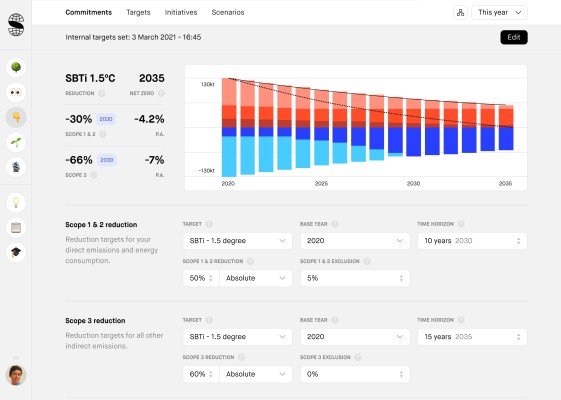10 investors discuss the no-code and low-code landscape in Q1 2022 – TechCrunch
No-code and low-code development suites have so far been used mostly by marketers and analysts. But the winds are shifting, and these suites are increasingly finding a place in DevOps and security.
“Initially, no-code/low-code was primarily a way for non-technical builders to create (sometimes gimmicky) applications,” said Navin Chaddha, managing director at VC firm Mayfield.
“Today, it’s a core capability in many enterprise software companies to give non- or semi-technical end users, even DevOps and security engineers, the ability to easily and quickly deploy applications without the need for custom development. It’s transforming entire categories of enterprise software.”
We need to work against the stigma of using low-code with development/internal IT teams. Ganesh Bell, Insight Partners
The functionality offered by low-code solutions has come a long way in recent times. When we polled five VCs about the space in August 2020, they were largely bullish and predicted many use cases that would spur demand. Since then, though, even the highly technical space of machine learning has started to see no-code and low-code solutions pop up.
However, despite the growing acceptance in DevOps, there remain many obstacles, and according to Ganesh Bell, managing director at Insight Partners, one of the primary hurdles is psychological. “We need to work against the stigma of using low-code with development/internal IT teams,” he said.
“There is still pride in building things from scratch and a fear of not being taken seriously as a developer/development team, when in fact, low-code platforms enhance a developer’s capabilities by enabling them to work faster and do (a lot) more. Similarly, there is a fear of no-code tools getting unruly and somehow lacking governance.”
To get a better picture of the present state of the no-code/low-code market, we spoke to a group of active investors about how the space has fared since 2020, what challenges lie ahead, and when they expect their investments to start paying off.
For our latest survey, we spoke with:
- Sri Pangulur, partner, and Paul Lee, partner, Tribe Capital
- Ganesh Bell, managing director, Insight Partners
- Renato Valente, general partner, Iporanga Ventures
- Mo Islam, partner, Threshold Ventures
- Tommi Uhari, founding partner, Karma Ventures
- Navin Chaddha, managing director, Mayfield
- Alex Nichols, vice-president and Laela Sturdy, general partner, CapitalG
- Raviraj Jain, partner, Lightspeed Ventures
Sri Pangulur, partner, and Paul Lee, partner, Tribe Capital
Has no-code/low-code lived up to the hype it had generated back in 2020? How much has adoption increased since? Are these numbers in line with the growth you expected?
At one point, the no-code/low-code category was seen to be the greatest market enabler for the majority of the non-technical workforce segment. To some extent, there have been some early signs of this.
But generally speaking, there still is a long way to go given that custom application development continues to have strong growth, and there has been no slowdown in hiring technical talent due to no-code/low-code dominance. We think there will be great difficulty in replacing general-purpose software development with no-code/low-code platforms.
That said, over the past year, we have seen existing solutions start to really mature and continue to show traction. Vertically-focused, no-code/low-code products have especially found great fit in the market with companies like Instabase and Uncorq in financial services, and Olive AI in healthcare.
There have been newer horizontally-focused companies like Appsmith that exploded in growth recently as well, going from zero to over a thousand companies using the product in the past year alone.
The continued demand for no-code/low-code platforms is driven by the fact that software continues to eat the world and there is great difficulty in hiring skilled developers to keep up with the demand.
Where are you skeptical about no-code/low-code? Which aspects are overhyped?
There are a few areas where we have some concerns about the no-code/low-code thesis at the moment. First, we do not think that pre-coded element interfaces are going to cover every edge case, and it’s really the edge cases that make the user depend on their current specific workflow.
Second, we think the no-code/low-code category is horizontally getting a little bit saturated. There is some level of user confusion, where a set of co-workers on a team may be pushing for collaboration to be done in one specific application and another set of workers may be pushing for a competing solution. This can slow down productivity.
No-code may work well in verticals with well-defined use cases and a huge pull from non-developers, or in cases where the target user is also the buyer. For example, there are several companies that now make it easy for designers to turn their designs into live mobile or web apps quickly through a drag-and-drop approach. This is highly desirable for designers.
However, when serving larger enterprise customers that require much greater customization, development resources are needed, as a drag-and-drop approach won’t be sufficient.
Which no-code/low code developed apps excite you the most?
We see big opportunities in internal tools that usually require a lot of third-party integrations. Here, low-code platforms replace a lot of the mundane work of creating internal tools and applications.
Modern low-code tools may provide about 90% of the out-of-the-box functionally required for these operations and about 10% wiggle room for customization required by the specific use case. The market for internal corporate applications is quite large and we think companies like Retool and Appsmith have a tremendous opportunity in front of them.
What are some of the obstacles no-code/low-code still has to overcome?
No-code/low-code is still nascent in adoption. Although you may need fewer developers, you do need people to be extra familiar with how the software works. If no-code/low-code solutions truly have the potential to reduce the app development time significantly, then there are still plenty of teams that have yet to experience it.
One oversight that occurs often when thinking about the development of applications is that it’s not always just about the code. When developers build applications, there is a lot that goes into it outside of the coding, such as testing, debugging, version control, sandboxing, code reviews, etc. By removing the coding part of application development, you can solve some of the fundamental issues in dealing with code, but you also lose the benefits.




